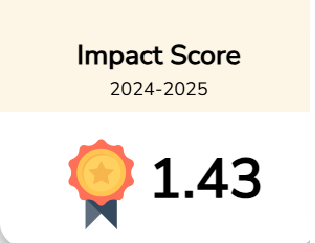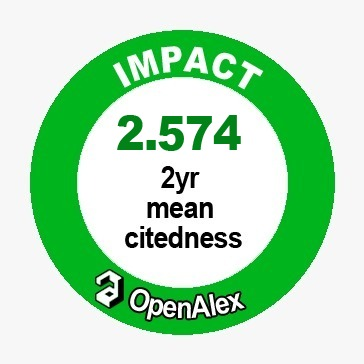Preparation of Manuscripts
Language and Text:
- The manuscript must be written in English. Whenever there is any doubt, authors should seek the assistance of experienced, English-speaking editors.
- The size of the type font should be “12 points”. Fonts type to be used is Times Roman.
- Use active voice whenever possible.
- Use past tense when describing and discussing the experimental work on which the paper is based.
- Reserve present tense for reference to existing knowledge or prevailing concepts and for stating conclusions from the experimental work; use past tense for reporting results of the present study.
- Clearly differentiate previous knowledge and new contributions.
- Explain what an abbreviation means the first time it occurs.
- In general, avoid anything that causes offense. Be sensitive to labels. Avoid equating people with their conditions, for example, do not say “schizophrenics,” say “people diagnosed with schizophrenia.”
- Use the following styles for within text headings.
- Level-A Headings are Centered and Set in Heading Caps
- Level B: Flush with Left Margin, Italicized, Set in Heading Caps
- Level C headings: Indented, italicized, sentence caps.
- Instead of using extra spaces or extra paragraphs for positioning text, use paragraph tools from word processing program.
Pages format:
Type the manuscript on A4 size white bond paper, 8-1/2×11 inches (21.6×27 cm) with margins of at least 1.5 inches (4 cm). Type on one side of the paper only double spacing every page. Begin each of the following section on separate page and in the following order: title page, abstract, introduction, materials / subjects / patients and methods, results, discussion, acknowledgements, references, tables and figures (each on a separate page) and legends. Number pages consecutively, beginning with the title page. Type the page number in the upper right-hand corner of each page.
Manuscript structure
Each manuscript component should begin on a new page in the following sequence: Title page, Abstract with Keywords, Main Text, Acknowledgments, References, Tables, and Figures.
Title Page
The title page of the manuscript should include: (1) concise and informative title (less than 200 characters); (2) complete by line, with first, middle initial and last name of each author up to ten authors may be cited; (3) complete affiliation for each author, with the name of department (s) and institution (s) to which the work should be attributed; (4) disclaimer, if any; (5) name, address and telephone number and email address (necessary) of one author responsible for correspondence about the manuscript; (6) name and address of author to whom reprint request should be directed, or statement that reprints are not available from the author; (7) source(s) of support in the form of grants equipment, drugs, or all of these; (8) word count.
Authorship
- All persons designated as authors should qualify for authorship.
- Each author must have participated sufficiently, intellectually or practically, in the work to take public responsibility for the content of the article, including the conception, design, and conduct of the experiment, and for the data interpretation.
- Editors may require authors to justify the assignment of authorship.
- A paper with corporate (collective) authorship must specify the key persons responsible for the article; others contributing to the work should be recognized separately.
- Authors should disclose whether they have any advisory board affiliation or financial interest in any organization sponsoring the research.
- All authors must sign a statement agreeing to these requirements for authorship with the transfer of copyright.
Abstract and Keywords
Provide on a separate page a structured abstract of not more than 250 words for original article and an unstructured abstract of no more than 150 words for other submission types. The structured abstract should consist of four paragraphs, labeled Objective, Methods, Results and Conclusion. They should briefly describe, respectively, the problem being addressed in the study, how the study was performed, the salient result and what the authors conclude from the results. The unstructured abstract is in the form of one paragraph covering these headings.
Main Text
Introduction
State the purpose of the article and summarize the rationale for the study or observation. Give only strictly pertinent references and do not include data or conclusions from the work being reported. Clearly mention the objective(s) of the study in this section without adding any sub-heading. The introduction should be limited to 500 words.
Methods
Describe your selection of the observational or experimental subjects (patients or laboratory animals, including controls) clearly identify the age, sex and other important characteristics of the subjects. The definition and relevance of race and ethnicity are ambiguous. Authors should be particularly careful about using these categories.
In methodology, identify the methods, apparatus and producers in sufficient detail to allow other researcher to reproduce the results. Give references for established methods, including statistical methods, provide references and brief description of methods that have been published but are not well known. Describe new or substantially modified methods, give reasons for using them and evaluate their limitations. Mention setting, study design, sampling method, sample size, inclusion/exclusion criteria wherever applicable without adding any sub-headings. Describe statistical methods with enough detail to enable a knowledgeable reader with access to the original data to verify the reported results. Report the number of observations.
References for study design and statistical methods should be to standard works when possible rather than to articles in which designs or methods were originally reported.
Indicate whether variables were transformed for analysis. Provide details about hypothesis were tested, what statistical tests were used, and what are the outcome were. Indicate the level of significance used in test.
Reports of randomized clinical trials should present information on all major study elements including the protocol (study population, interventions or exposures, outcomes and the rationale for statistical analysis), assignment of interventions (methods of randomization, concealment of allocation to treatment groups) and the method of masking (blinding).
Authors submitting review manuscripts should include a section describing the methods used for locating, selecting, extracting and synthesizing data. These methods should also be summarized in the abstract.
Ethics
When reporting experiments on human subjects, indicate whether the procedures followed were in accordance with the ethical standards of the responsible committee on human experimentation (institutional or regional) and with the Helsinki Declaration of 1975, as revised in 1983. Do not use patients’ names, initials, or hospital numbers, especially in illustrative material. When reporting experiments on animals, indicate whether the institutions or a national research council’s guide for or any national law on the care and use of laboratory animals was followed.
Statistics
Describe statistical methods with enough detail to enable a knowledgeable reader with access to the original data to verify the reported results. When possible, quantify findings and present them with appropriate indicators of measurements error or uncertainty (such as standard deviation when mentioning mean values of quantitative variables, or confidence intervals where odds ratio is mentioned, etc.). Mention the statistical test used for analysis to obtain the P values. Discuss the eligibility of experimental subjects. Give details about randomization. Describe the method for and success of any blinding of observations. Report complications of treatment. Give numbers of observations. Report losses to observation (such as dropouts from a clinical trial). References (if necessary) for the design of the study and statistical methods should be to standard works when possible (with pages stated) rather than to papers in which the designs or methods were originally reported. Specify any general use computer programs used.
Put a general description of methods in the methods section. When data are summarized in the results section, specify the statistical methods used to analyze them. Restrict tables and figures to those needed to explain the argument of the paper and to assess its support. Use graphs as an alternative to tables with many entries; do not duplicate data in graphs and tables. Avoid non-technical uses of technical terms in statistics, such as “random”, (which implies a randomizing device), “normal”, “significant”, “correlations” and “samples”. Define statistical terms, abbreviations and most symbols.
Results: Present your results in logical sequence in the text, tables and illustrations. Do not repeat in the text all data in the tables or illustrations emphasize or summarize important observations.
Discussion: Emphasize the new and important aspects of the study and conclusions that follow from them. Do not repeat in detail data or other material given in the introduction or the results section. Include in discussion section the implications of the findings and their limitations including implications for future research. Relate the observations to other relevant studies. The discussion should not exceed 1200 words except in unusual circumstances. Link the conclusions with the goals of the study but avoid unqualified statements and conclusions not completely supported by data. In particular, authors should avoid making statements on economic benefits and costs unless their manuscript includes economics data and analyses. Avoid claiming priority and alluding to work that has not bf completed. State new hypothesis when warranted. But clearly label them such recommendations, when appropriate, may be included.
Acknowledgments
Persons who have contributed intellectually to the paper but whose contributions do not justify authorship may be named and the function or contribution is described – for example, “scientific advisor critical review of study proposal, “data collection,” or “participation clinical trial”. Such persons must have given their permission to be named. Authors are responsible for obtaining written permission from person acknowledged by name, because readers may infer their endorsement the data and conclusions. Technical help should be acknowledged in a paragraph separate from those acknowledging other contributions.
References
Reference Citations (In-Text)
Use the author-date format
Reference List
APA reference style is to be followed. Here are a few examples of the most commonly used reference types.
Journal Article:
Farooqi, A. & Gibson, T. (1998). Prevalence of the major rheumatic disorders in the adult population of north Pakistan. Br.J Rheumatol., 37, 491-495.
Waheed, A., Hameed, K., Khan, A. M., Syed, J. A., & Mirza, A. I. (2006). The burden of anxiety and depression among patients with chronic rheumatologic disorders at a tertiary care hospital clinic in Karachi, Pakistan. J Pak Med Assoc, 56, 243-247.
Books (Group author, 3-5 authors, reprint/translation, edition other than first):
Booth, W. C., Colomb, G. G., & Williams, J. M. (1995). The craft of research. Chicago: University of Chicago Press.
Web page:
Dewey, R. A. (2002). Psych Web by Russ Dewey. Retrieved January 25, 2003 from http://www.psywww.com
vii. Tables: Each Table on a separate page, complete with titles and footnotes Legends for figures
viii. Figures: Figures must be good-quality, unmounted glossy prints or high-quality laser-printed copies, usually 127 by 173 mm but no larger than 203 by 254 mm. Lettering should be large enough to be readable when reduced to 1 column width (<85 mm) or, in rare cases, to 2 column widths. If colour illustrations are included, a statement that the author(s) is (are) willing to bear the cost of colour separation and reproduction is requested.
Manuscript Checklist
- Original double-spaced typed manuscript. Mention type of submission in your cover letter with a word count. Provide a soft copy (CD) along with two hard copies.
- Two sets of unmounted glossy Figures (no smaller than 3-1/2×5 inches and not larger than 8×10 inches).
- Title page with title, authors’ names and complete affiliations.
- corresponding author, complete address, telephone number and email address (necessary), author for reprint requests and complete address.
- References in consecutive numerical order. Reference list typed double space.
- Figures and Tables in consecutive numerical order.
- Legends for all figures typed double spaced.
- Consent forms for patient photographs. Written permission from the publisher to reprint previously published figures and tables.





